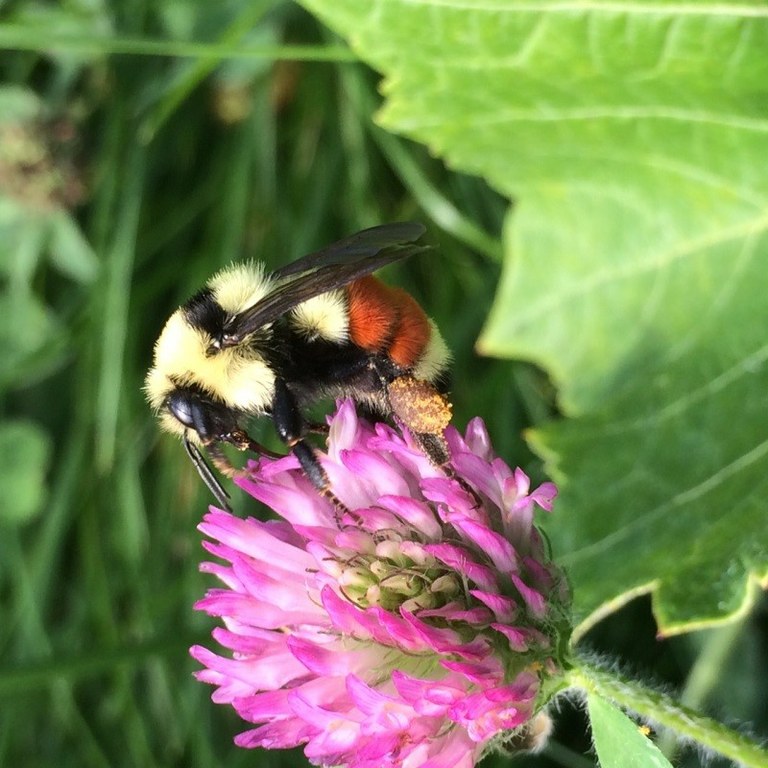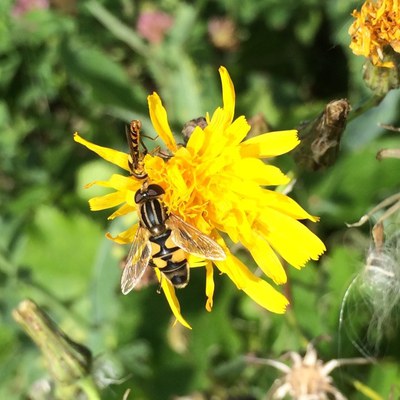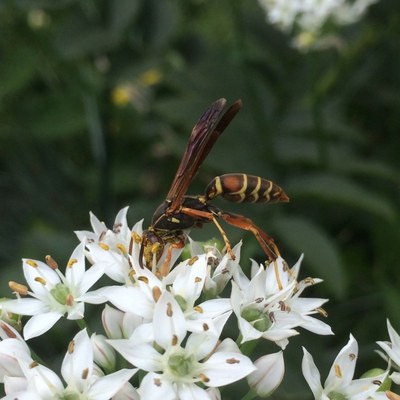Another Reason to Quit Mowing
In the fall, pollinators like bees, moths, butterflies, flies and wasps, and insect predators are stashing away nutrients to help them survive the winter. Wild bees can increase the production of crops 15-50% over honeybees alone! Even soybeans see a 10-50% increase in production if bees are present in the fields. However, wild, super-efficient pollinators have declined in numbers all across the world due to many factors, but primarily due to habitat loss. (70% of bees are solitary and live in the ground.)
One small thing that we can do is let ‘unused’ places and little corners be a little wilder. You can do this by considered neglect or by planned methods. Do it in your yard. Do it on the edges of your fields and paths. Let clover grow in your lawn. Wait to mow until everything is dormant. Just do less. Crops of all kinds will produce better when wild pollinators are part of our landscape.
Following are links to some useful follow-up information:
- Wildlife Conservation on Farmland Volume 1: Managing for nature on lowland farms. How can Field Margin Management Contribute to Invertebrate Biodiversity? Feber, Johnson, Tattersall, Manley, Hart, Smith, Macdonald. Link
- Native wildflower plantings support wild bee abundance and diversity in agricultural landscapes across the United States. Williams NM, Ward KL, Pope N, Isaacs R, Wilson J, May EA, Ellis J, Daniels J, Pence A, Ullmann K, Peters. Ecological Applications, 2015. Link
- Functional group diversity of bee pollinators increases crop yield. Hoehn P, Tscharntke T, Tylianakis JM, Steffan-Dewenter I. Proc. Biol. Sci., 2008. Link
- Wildlife-friendly farming increases crop yield: evidence for ecological intensification. Pywell RF, Heard MS, Woodcock BA, Hinsley S, Ridding L, Nowakowski M, Bullock JM. Proc. Biol. Sci., 2015. Link
Fall pollinator sightings at the CREC:

A Hunt bumble bee visits sweetclover, black-eyed Susan and thistle.

Two kinds of Syrphid flies. These are common hoverfly pollinators.

Northern paper wasp, Polistes fuscatus.
Kathy Wiederholt
Fruit Project manager


